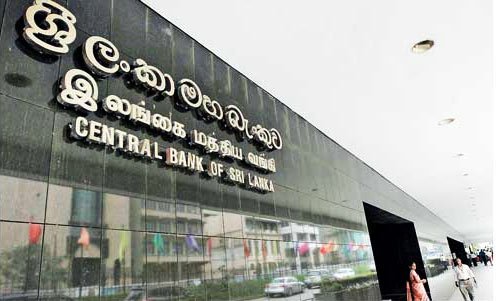Sri Lanka to halve maximum foreign holding limit in govt securities

Sri Lanka plans to restrict foreign holdings of government securities to a maximum 5 percent from the current 10 percent to prevent possible hot money flows and improve the quality of reserves, the country’s central bank chief said on Wednesday.
The surprise move comes after the island nation suffered about $1 billon in foreign outflows from rupee-denominated government securities in 2018.
Nearly 42 percent of these outflows were in the last couple of months in the aftermath of a political crisis triggered by President Maithripala Sirisena sacking Prime Minister Ranil Wickremesinghe.
Foreigners held 3.1 percent of the total outstanding government securities of 5.29 trillion rupees ($28.95 billion) as of Dec. 26, central bank data showed.
“In view of the increased volatility in global financial markets, we also intend to reduce the threshold for foreign investment in rupee denominated government securities from 10 percent of the outstanding government securities stock at present to 5 percent,” Central Bank of Sri Lanka Governor Indrajit Coomaraswamy said.
A rise in interest rates in the U.S. and major economies, and trade tensions, have led to greater volatility in the system, he added, during the release of the bank’s 2019 economic outlook.
“All that has elevated uncertainty. In such a context, foreign institutional investors, that is foot loose money, goes in and out very fast. Those are the people we gave this 10 percent limit. Now with a much more volatile global financial context, its better not to have as much exposure.”
Sri Lanka’s economy is struggling to attract long-term foreign investment due to policy inconsistency and political instability.
The recent political crisis led to rating downgrades by credit agencies Fitch, S&P, and Moody’s. They cited refinancing risks and an uncertain policy outlook.
The government does not encourage short-term capital flows into government debt, Nandalal Weerasinghe, the central bank’s senior deputy governor, told reporters.
“Our policy is to encourage more long-term reserves like international sovereign bonds and syndicated loans. This is just to improve our quality of reserves and to have more stable money,” he said.
WEAK OUTLOOK
The central bank expects Sri Lanka’s 2018 economic growth rate to come in at around 3 percent, its lowest since the $87 billion economy faced a contraction in 2001 due to a militant attack on its main airport. The economy grew at 3.2 percent in 2017.
The central bank’s tight monetary policies and the government’s fiscal consolidation efforts are in line with the terms agreed for a $1.5 billion loan from the International Monetary Fund (IMF) in 2016.
“Political uncertainties, especially during the last quarter of the year, amplified challenges to overall macroeconomic stability. Sub-par economic growth continued in 2018 following subdued growth in 2017,” Coomaraswamy said.
However, he said Sri Lanka’s economic growth numbers have been underestimated due to a lack of information from the surveys used to help measure it.
“My own view is that we need to look very carefully whether we are recording our GDP correctly. I feel we are not a 3 percent GDP economy for sure. The system is new. There is a shortage of staff and the methodology is new. So we may be understating our GDP,” he told reporters.
The tight monetary policies implemented from 2015 have yielded desired results such as lower demand-driven inflation and declining trends in money and credit aggregates compared to 2016 and 2017, he added.
He also said that the central bank is considering negotiating with the IMF to extend the loan by another year. It will have to negotiate with the global lender on terms of such a move.
The IMF has delayed discussions on Sri Lanka’s next loan tranche because of the country’s political crisis.
(Reuters)
Latest Headlines in Sri Lanka
- German Defence Attaché calls on Sri Lanka’s Defence Secretary December 5, 2025
- IMF considers $200 Million aid to Sri Lanka after Cyclone Ditwah December 5, 2025
- Sri Lanka’s 2026 Budget passed in Parliament December 5, 2025
- Sri Lanka reports 607 dead, 214 missing after extreme weather December 5, 2025
- Maldives donates tuna containers to Sri Lanka December 5, 2025


